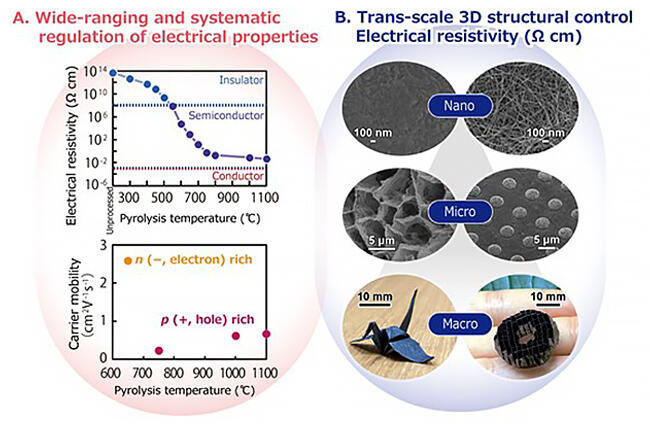In recent years, the quantity of electronic devices produced has rapidly increased, and exhaustible resources such as metals and oil are quickly being consumed. Moreover, the environmental effects caused by trash from electronic devices, which is being produced in large quantities, have become profound.
A joint research group consisting of Associate Professor Hirotaka Koga of the Institute of Scientific and Industrial Research, Osaka University (SANKEN) and his colleagues has developed environmentally friendly electronic devices that possess excellent functionality and are easy to dispose of, using nanopaper created from nanocellulose derived from wood. However, as nanopaper is an insulator, its use is mainly limited to substrates; semiconductors made from exhaustible resources were necessary to make it functional as an electronic device.
In these developments, the research team has made good use of a technique that gradually pyrolyzes nanopaper and has succeeded in developing a semiconductor with wide control over 3D structures at nano, micro and macro levels, as well as regulation of electrical properties. The group verified its utility by detecting the leakage from masks via a wearable water vapor sensor that used this semiconductor. In addition, they were able to confirm its excellent performance as an electronic device in biofuel cell energy generation.
These outcomes show that the group has created a new utility value for nanocellulose as a semiconductor. This means that the customization of electrical functions and 3D structures according to purpose and use is possible, and the creation of electronic devices completely derived from wood is no longer a dream.
The research team will focus on further regulating electrical properties and functions and improving processes, promoting research that aims to create sustainable electronics.

B: 3D structure for which wide-ranging control is possible on nano, micro, and macro levels.




